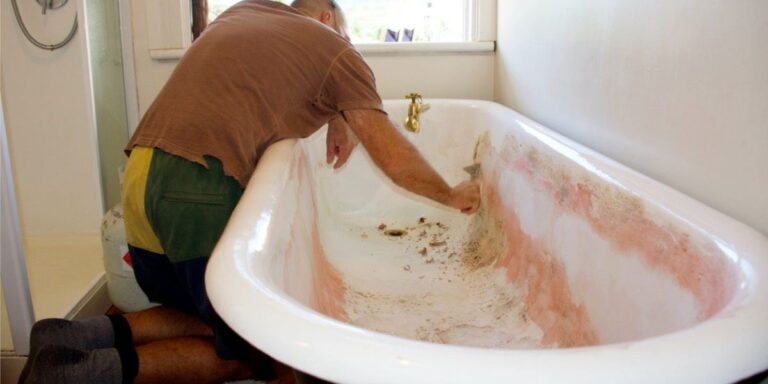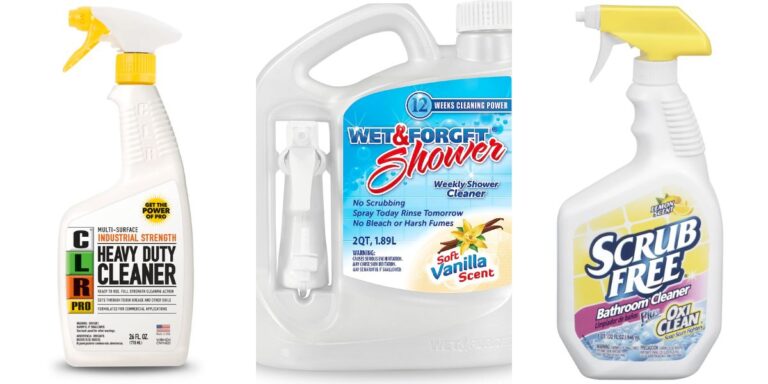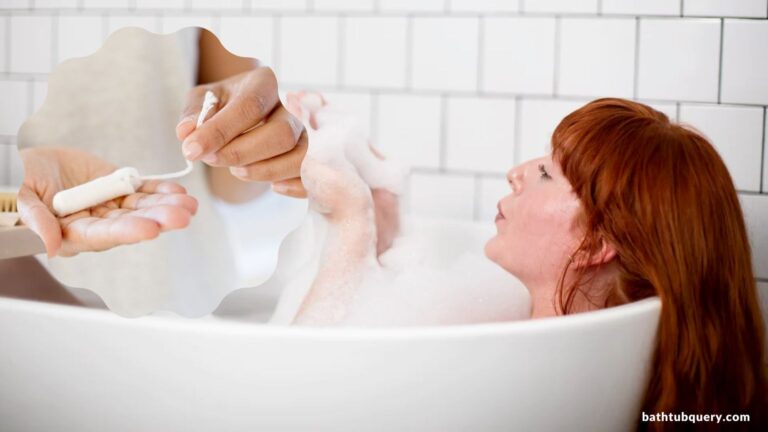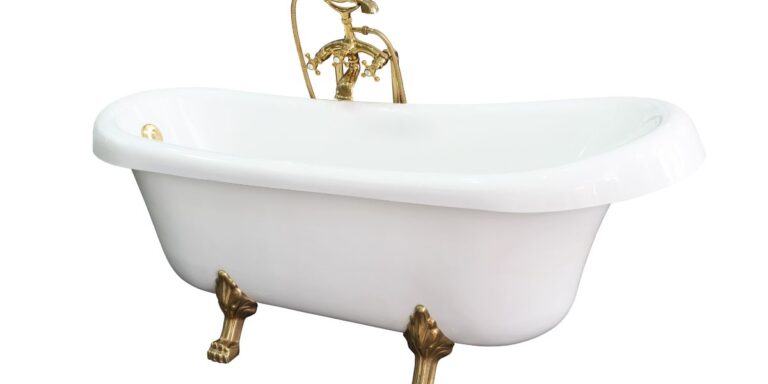Why Bathtub Feels Like Sandpaper? Here Is The Solution
When stepping into your bathtub for a relaxing and soothing experience, encountering a sandpaper-like texture underfoot can be extremely unpleasant. This unexpected sensation is a common issue that has caused concern for many.
In this article, we will delve into the reasons behind why a bathtub feels like sandpaper, propose effective solutions to remedy this problem, and provide preventive measures for ensuring it doesn’t happen in the future. Join us as we explore the world of bathtubs and uncover ways to enhance your bathing experience.
Why does your bathtub feel like sandpaper?
If your bathtub feels like sandpaper, it could be a sign that the surface was not properly cleaned or sanded during the resurfacing process. This texture doesn’t refer to a non-slip finish, and it’s recommended to ensure proper smoothing for a comfortable tub surface.
What Causes a Bathtub to Feel Like Sandpaper?
Understanding why your bathtub feels like sandpaper is the first step towards finding a solution. Here are some common causes:
Age and Wear and Tear
One of the most common reasons for a bathtub feeling rough is simply age and wear and tear. Over time, even the most well-maintained bathtubs can begin to lose their smoothness, as the finish gradually wears away. This can leave behind a rough surface that is unpleasant to sit on. If your bathtub is old, this may be the most likely cause of the sandpaper feeling.
Hard Water Build-Up
Another possible culprit for a rough bathtub is hard water build-up. Hard water contains high levels of minerals, such as calcium and magnesium, which can over time build up and harden on your bathtub surface. This can leave a rough, textured feeling behind, similar to sandpaper. If you live in an area with hard water, this could be the cause of your bathtub woes.
Soap Scum and Residue
Soap scum and other kinds of residue can also build up on the surface of your bathtub over time, leading to a rough, sandpaper feeling. This can be caused by various personal care products, including shampoos, conditioners, body washes, and soaps. If you notice that your bathtub is particularly rough immediately after one of these products is used, it’s a good indication that the residue is responsible.
Improper Cleaning Techniques
Finally, it’s possible that the rough feeling of your bathtub is simply due to improper cleaning techniques. Certain cleaning products and techniques can scratch or damage the surface of your bathtub, leading to a rough, uneven finish. If you’ve been using abrasive sponges or harsh chemicals to clean your bathtub, it’s worth reevaluating your approach to ensure you’re not further damaging the surface.
| Cause | Solutions |
|---|---|
| Hard Water Buildup | Use water softeners, vinegar |
| Improper Cleaning | Use non-abrasive cleaners |
| Wear and Tear | Regular maintenance, re-surfacing |
How to Get That Smooth-as-Silk Bathtub Feeling Again?
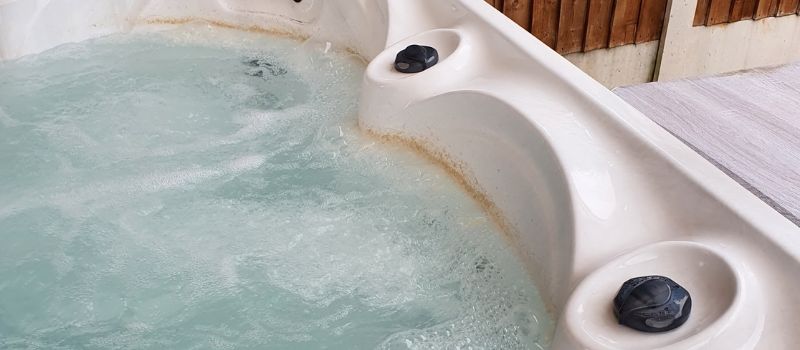
What causes a rough bathtub? The most common culprit is worn enamel. Over time, enamel can wear away and leave a gritty surface. Another possibility is buildup from mineral deposits or soap scum. If you’re experiencing a rough bathtub, here are a few solutions to try:
- Use a pumice stone or fine sandpaper: If the problem is minor, you may be able to scrub it away with a pumice stone or fine sandpaper. Be sure to wet the surface first and use gentle pressure. Don’t use a coarse or heavy-duty abrasive, as this can further damage the enamel.
- Try a vinegar or lemon juice soak: If mineral buildup is to blame, you can try soaking the affected area in vinegar or lemon juice. Mix equal parts water and vinegar or lemon juice and let it sit for 30 minutes to an hour. Then, rinse with water and wipe away any remaining residue.
- Use a commercial cleaning agent: If the problem is stubborn and won’t budge with DIY methods, you may need to use a commercial cleaning agent. Look for one that’s specifically designed for tubs and showers and follow the instructions carefully. Be sure to wear gloves and keep the area well-ventilated.
Maintaining a smooth bathtub:
Once you’ve solved the roughness issue, you’ll want to take steps to keep the surface smooth. Here are a few tips:
- Clean regularly: Regular cleaning will prevent buildup from occurring in the first place. Use a mild cleaner and a soft sponge or cloth.
- Don’t use abrasive materials: Avoid using scrub brushes or abrasive sponges, as these can damage the enamel.
- Rinse thoroughly: After each use, rinse the tub thoroughly with warm water to remove any soap residue or buildup.
Prevention: Keeping Your Bathtub Smooth
- Regular Maintenance: Cleaning your bathtub regularly with proper products.
- Monitor Water Quality: Using a water softener if you have hard water.
- Avoid Harsh Chemicals: They can damage the surface over time.
Key Takeaway
The issue of your bathtub feeling like sandpaper can usually be traced back to a few common causes. By understanding these, choosing appropriate cleaning methods, and maintaining regular upkeep, you can ensure a smooth and comforting bathtub experience.
Frequently Asked Questions
Why does my bathtub feel like sandpaper?
It could be due to hard water buildup, improper cleaning products, or general wear and tear.
Can I fix a sandpaper-like bathtub myself?
Yes, using non-abrasive cleaners and vinegar can usually solve the problem.
How can I prevent my bathtub from feeling like sandpaper in the future?
Regular maintenance, using proper cleaning products, and monitoring water quality can prevent this issue.
Is a sandpaper-like texture in my bathtub a sign of something serious?
It can be, but it’s usually fixable. If the issue persists, it may be wise to consult a professional.
Can hard water cause my bathtub to feel like sandpaper?
Yes, minerals from hard water can accumulate and create a gritty texture.
Read more:
- Why Tub Refinishing Gone Wrong? Do’s and Don’t
- Is A Peeling Bathtub Dangerous?
- 9 Common Reglazed Tub Problems And Solutions Are Here
- Difference Between Reglazing And Refinishing A Bathtub

Amanda has been designing and installing bathtubs for over 15 years. She first got interested in the bathtub industry while working as an interior designer right after college. During her years as a designer, Amanda was frustrated by the lack of high-quality, unique bathtub options for her clients. This passion led her to start her own bathtub website in 2009.



